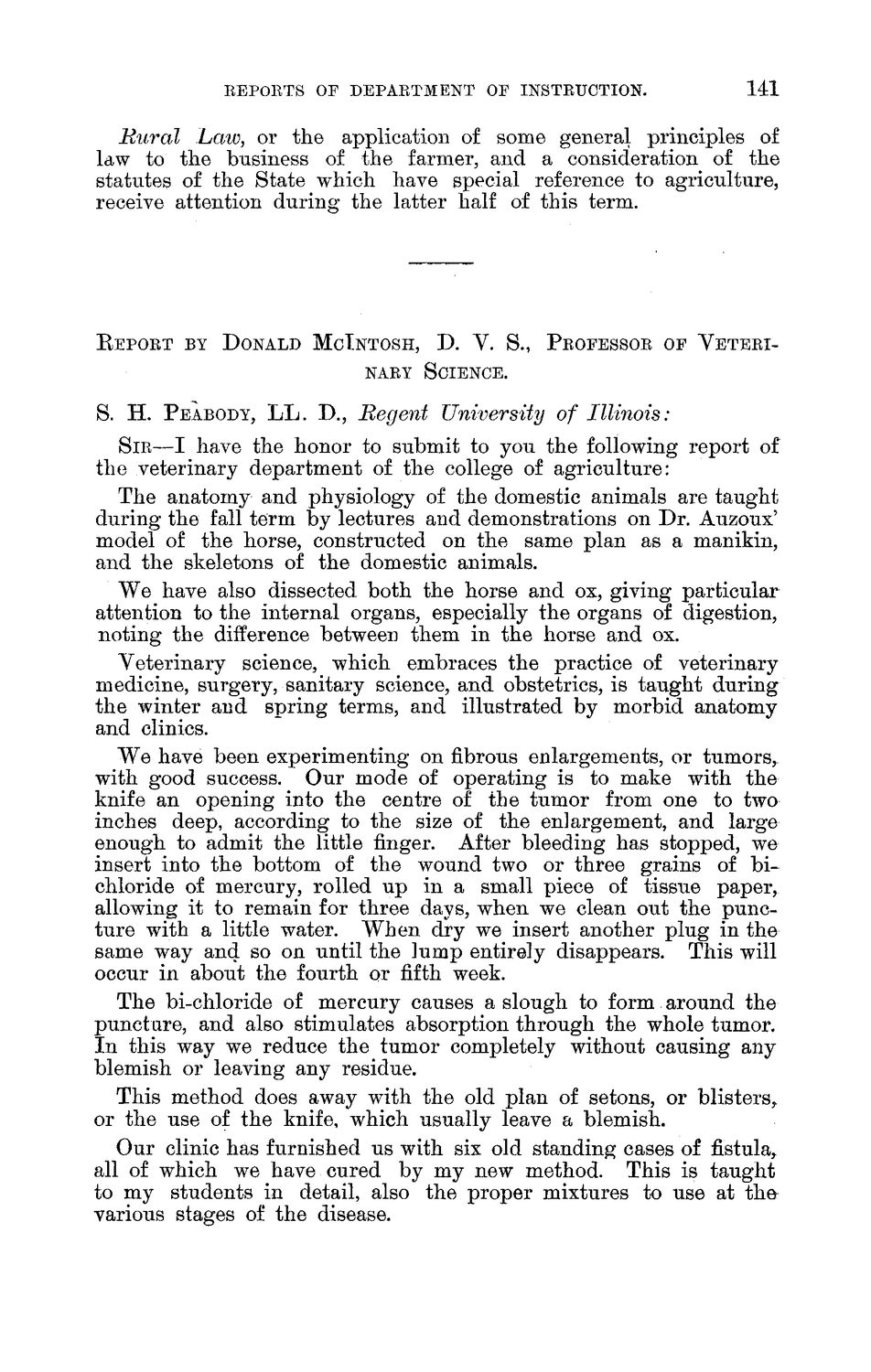| |
| |
Caption: Board of Trustees Minutes - 1888
This is a reduced-resolution page image for fast online browsing.

EXTRACTED TEXT FROM PAGE:
REPORTS OF DEPAKTMENT OF INSTEUCTION. 141 Rural Law, or the application of some general principles of law to the business of the farmer, and a consideration of the statutes of the State which have special reference to agriculture, receive attention during the latter half of this term. EEPOKT BY DONALD MCTNTOSH, D. V. S., NARY SCIENCE. PROFESSOR OF V E T E R I - S. H. PEABODY, L L . D., Regent University of Illinois: S I R — I have the honor to submit to you the following report of the veterinary department of the college of agriculture: The anatomy and physiology of the domestic animals are taught during the fall term by lectures and demonstrations on Dr. Auzoux' model of the horse, constructed on the same plan as a manikin, and the skeletons of the domestic animals. We have also dissected both the horse and ox, giving particular attention to the internal organs, especially the organs of digestion, noting the difference between them in the horse and ox. Veterinary science, which embraces the practice of veterinary medicine, surgery, sanitary science, and obstetrics, is taught during the winter and spring terms, and illustrated by morbid anatomy and clinics. We have been experimenting on fibrous enlargements, or tumors, with good success. Our mode of operating is to make with the knife an opening into the centre of the tumor from one to two inches deep, according to the size of the enlargement, and large enough to admit the little finger. After bleeding has stopped, we insert into the bottom of the wound two or three grains of bichloride of mercury, rolled up in a small piece of tissue paper, allowing it to remain for three days, when we clean out the puncture with a little water. When dry we insert another plug in the same way and so on until the lump entirely disappears. This will occur in about the fourth or fifth week. The bi-chloride of mercury causes a slough to form around the puncture, and also stimulates absorption through the whole tumor. I n this way we reduce the tumor completely without causing any blemish or leaving any residue. This method does away with the old plan of setons, or blisters, or the use of the knife, which usually leave a blemish. Our clinic has furnished us with six old standing cases of fistula, all of which we have cured by my new method. This is taught to my students in detail, also the proper mixtures to use at thevarious stages of the disease.
| |